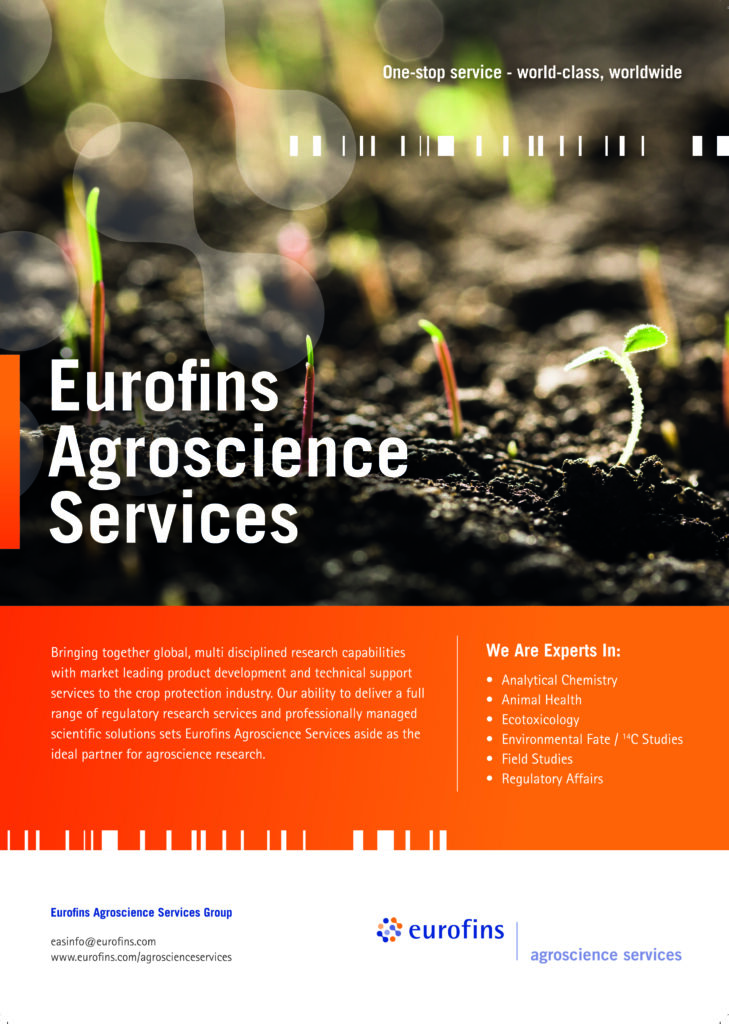Bringing Biological Products to the North America
Scroll Down to Read
By Renee Targos
With the U.S. being one of the largest biological markets in the world, many crop protection and plant health companies are focused on this region for product launches. With so much competition, AgriBusiness Global talked with experts to get tips on creating a strong strategy to bring your biological innovations to North American markets.
While U.S. growers are open to innovation, for companies wanting to target gaps in the biologicals market, Mark Trimmer, President and Founding Partner of DunhamTrimmer says the “future growth in the U.S. is going to have to come from new products that are controlling pests that are not being controlled with existing biocontrol products, or entry into the broader row crop market in a bigger way.”
 Mark Trimmer |
 Lawrence Middler |
But for now, Trimmer says, “It’s still a microbial market in the U.S. The traditional microbials — the Bts and then the Bacillus subtilis and the Bacillus amyloliquefaciens products — are all doing well, and I think in some cases expanding.”
Another area of growth is in biostimulants.
Lawrence Middler, Lead Analyst for AgbioInvestor, “We can expect innovation to be at the forefront of the U.S. market, with a greater interest in biostimulants, as well as plant extract products both on the biopesticide and biostimulants side. Innovations such as using fermentation technology to more cost effectively produce pheromones, as well as microencapsulation technology could lead to opportunities to use pheromones to a greater extent in row crops.”
Breaking into the Market
While the U.S. market shows growth potential, getting your product into the hands of a grower isn’t an easy road. Beyond the well-known challenges of the U.S. Environmental Protection Agency’s (EPA) backlogged and costly registration process, big farms using established synthetic chemicals, the need for large-scale farm trials for registration dossiers, and the continuing education of farmers on the use and efficacy of biologicals, Thomas Laurent, CEO of Micropep says there is another challenge that many companies overlook.
“The high efficacy expectations from U.S. farmers make it essential to present robust, localized data showing that biologicals can deliver consistent performance across diverse soil types and climatic conditions,” says Laurent.
“Many biological products are best positioned as part of an integrated pest management (IPM) program, either as mixing or rotation partners, and understanding which other products best complement your biological offering to maximize value to the grower.”
 Thomas Laurent |
 Keith Jones |
“Furthermore, U.S. investors are also looking at innovative solutions that can scale. It is no longer good enough to provide a powerful biological product. It is about the impact of the cost of goods sold, how the product can be scaled, how will it get to market, and what will its impact be in the field.”
Adding to these challenges are the complexities of dealing with ag retailers. Trimmer says for companies based outside the U.S. it’s difficult to gain an “understanding of our distribution channel and how to gain market access successfully.”
Getting this additional information means boots on the ground, which can be difficult for start-up companies that don’t have the budget. However, the benefits of having staff set up in the U.S. creates a pathway for better market access.
The Biological Products Industry Alliance (BPIA) promotes biological development and use in the U.S. and has more than 170 member companies. Keith Jones, Executive Director of the BPIA says, “It is very difficult to break into a new or foreign market, including the U.S. without having adequate staff in the country. It’s not something that can easily be managed remotely despite all the advances in technology that enable us to easily engage with folks around the world.”
In addition to building in-person relationships, companies should also address:
Pricing
With 2024 being a tough financial year for the industry, growers don’t have the extra money to experiment on unknown products. Biological products are often sold at a higher cost than synthetic chemical crop protection products. Growers won’t be purchasing anything that can’t be proven.
“There needs to be a clear case made to growers on return on investment,” says Middler. “This will of course be less problematic for the most efficient nitrogen fixing products. Poor quality biostimulants, or ones used in a sub-optimal way, could lead to a yield penalty and damage the company’s brand identity and hurt grower’s financial returns.”
Application Systems
Growers also won’t be purchasing additional equipment or reconfiguring their farming processes to apply your product. While more U.S. farmers are using precision application systems, like drones and other precision ag technology, identify how well your product does with tank mixing or if it needs different packaging.
“Many companies are now offering closed transfer systems, where the products come pre-loaded into cartridges,” says Middler. “Therefore, there is an opportunity to license biological products into these systems perhaps from smaller bio-players, however there will be competition from larger multinationals biologicals operations integrating their own IP into these systems.”
One way to convince growers to try your product is to offer the facts and work with them on how it fits in with their current farming practices.
“Growers operate on tight margins and are cautious with their investments,” says Laurent. “Credibility is key. You must avoid overstating the potential benefits of your product and instead focus on providing clear, expert guidance on how it can be effectively integrated into existing agricultural practices. Building strong relationships with farmers by offering honest, transparent communication and valuable support is essential.”
Plan for Success
One of the most important practices for success in the U.S. when launching a biological is: Patience. Often companies need a quick return on their investment, and it just doesn’t happen in the world of biologicals. Plan out what kind of financing you’ll need in the face of a slow ROI.
Here are some other go-to-market considerations:
1.Partnering with Established Distributors: Building a partnership or collaborating with a reputable distributor or ag retailer can get your product noticed and purchased. Laurent says he experienced this with his company. “Micropep’s partnership with FMC serves as an example of how aligning with established players can provide the trust and access needed to scale in the U.S. market.”
2.Localized Marketing: Getting your value propositions clearly communicated and differentiating your product is key to being remembered and understood when growers are making those decisions on what products to invest in. “Farmers in the U.S. have access to many of the latest crop protection innovations, therefore from a marketing perspective, it may be difficult to differentiate products from one and other,” says Middler. “It is imperative to bring the most efficacious products to market and to work with the distribution channel/agronomists to communicate the benefits and optimal usage.”
3.Farmer Education: Companies, like AMVAC, are creating online educational programs to be used by growers, agronomists, ag retailers and sales staff in its AMVAC Academy. Often, growers use biologicals in IPM programs, so consider creating educational programs that help growers to understand how your product works with other products, how and when to apply them, and the benefits of the long-term use.
“These initiatives should explain the product’s value over time, including its role in improving soil health, reducing chemical dependency, and supporting sustainable farming practices,” says Laurent. “Companies must clearly understand how and when their product performs, and when they don’t, so that they can clearly articulate their value proposition and help farmers use them in the most efficient way. In the U.S., companies must also take into account the size of the farms, which are much larger than those in Europe, resulting in different farming practices.”
4.Scaling through Partnerships: One of the benefits of joining an association like BPIA is it connects your company to other companies that can offer their experience. Jones says, “For non-U.S. companies, I would strongly encourage them to either partner with an experienced U.S. company, or engage an experienced U.S. based regulatory consultant to help your company navigate the nuances of the U.S. regulatory process.”
Laurent agrees. “Partnering not only boosts distribution but also helps overcome hurdles related to credibility and market penetration, particularly in niche markets where biological products may face competition from established chemical alternatives,” says Laurent.
A Parting Thought—Get Ready to Invest
A reason so many biological companies never get to introduce their unique solutions to help growers is they lack the financial backing to endure regulatory timelines, marketing efforts, and the years it takes to win over the trust of farmers.
“The timeline for adoption is primarily driven by the need for multiple seasons of field trials. While there are no absolute rules, companies should consider having between three to six years of field trials. One to four years for research purposes to work on dose, formulation, product positioning with farmers, plus one or two years for regulatory trials depending on the geography,” says Laurent. “These trials are essential to demonstrate the product’s consistent efficacy under varied conditions and to meet regulatory requirements. Moreover, farmers need time to evaluate the product’s performance, build trust in its benefits, and adapt to its use. Each planting season provides new data, making this a multi-year process.”
Top 3 Hinderances to Bringing a Biological into Canada and How to Overcome ThemAgriBusiness Global talked with Dana Schofield, Canadian Strategic Accounts Lead for Groundwork BioAg about launching a product in Canada. Here are his top three challenges and ways around with some cultural tips. 1. Volume of Options — Differentiating Your Product Dana Schofield “It is challenging for farmers to know which products truly offer value. The noise surrounding these solutions often gets grouped into one value proposition, making it difficult to identify what truly works and what is merely hype,” says Schofield. Schofield says to stand out develop a plan to provide comprehensive education. “Farmers don’t want to hear “this product works”, they want to understand how it works.” 2. Let the Data Do the TalkingCanadian growers need to data that proves your product works, which requires local trials that show your product works in their environment. “Farmers deserve transparent and reliable data that can help guide their decisions rather than overwhelming them with marketing claims,” says Schofield. “Farmers are increasingly reliant on data-driven decisions.” 3. Return on InvestmentIt’s important to know what your product can deliver and be upfront with growers on the best use of your product to help increase their yield. The more specific, the better. “We will adopt a farmer’s mindset by carefully determining which acres are most suitable for our products, opting for a targeted approach rather than a blanket application,” says Schofield. Cultural TipsRelationship Building. “Business development extends beyond mere sales. It’s crucial to invest time in attending trade shows, events and field days,” says Schofield. “Establishing a foundational relationship is key, and this often requires nurturing over time through regular communication and face-to-face interactions.” Patience. “Don’t be misled by what might seem like politeness; a friendly demeanor doesn’t always equate to a commitment or ‘yes’ in business dealings,” says Schofield. “Canadians appreciate open conversations, but it’s important to recognize that a positive discussion does not guarantee a transaction.” Coffee & Sports. “Tim Hortons coffee! While I joke about bringing Tim Hortons and chatting about hockey, connecting on local teams and interests can help break the ice and build rapport,” says Schofield. “At the end of the day, like most people in agriculture, it’s about building trust and relationships in Canada.” • |
Photo Credits:
Mark Trimmer – DunhamTrimmer
Lawrence Middler – AgBioInvestor
Thomas Laurent – MicroPep
Keith Jones – BPIA
Dana Scofield – Groundwork BioAg
